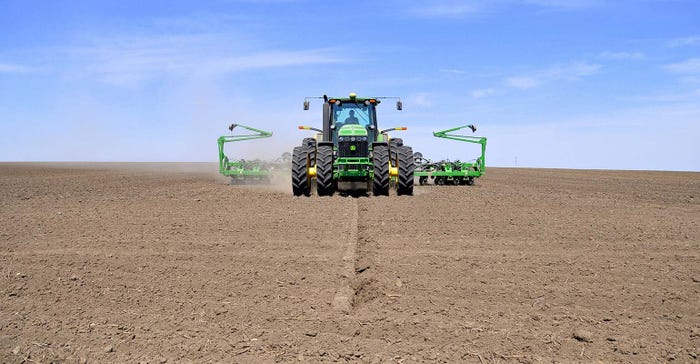
Traders trying to figure out whether soybeans or corn will win the battle to buy acres this spring likely will spend a lot of time focusing on the ratio between harvest delivery futures prices for the two crops.
When Farm Futures first surveyed growers about their intentions at the end of last summer the ratio was not far from its long-term average of 2.35 to one, soybeans to corn. Corn prices were coming off a halfway decent rally and growers showed a clear preference to plant more of the crop after cutting acreage in 2017.
By January, when we released our second survey, that dynamic changed dramatically. After offering multiple chances to sell 2017 crop soybeans for a profit, November 2018 futures enjoyed nearly a 2.6 to 1 advantage to December 2018 corn, a level that normally attracts growers to plant more of the oilseed.
We’ll release results of our final planting intentions survey March 23, a week before USDA reports results of its first survey of producers about their plans. While the soybean to corn ratio offers an easy rule of thumb, actual decisions by growers are likely to be far more complicated.
On some acres, the die is cast
The die is cast for those who already laid down nitrogen last fall. But more acres could be in play this year. Farmers are applying less ammonia after harvest, and delays getting the 2017 crop out of the field also impacted fertilizer applications.
Potential profits – or in many cases, losses – will also guide more decisions after four years of faltering farm income. And that’s where the battle for acres becomes a war where it’s every man – and woman – for themselves.
The cost of production for both crops varies widely. A look at budgets prepared by economists at land grant universities and USDA shows how wide that disparity is.
Farmers don’t have a standardized way of figuring how much money they might make planting, growing, harvesting and selling what they raise. And the experts aren’t much better. Variable costs, including fertilizer, seed and chemicals, don’t vary all that much per acre. But fixed costs are harder to peg down for factors like machinery depreciation, overhead and family living expenses. What to include as a charge for land is also in the eye of the beholder.
We tried to even out these costs as much as possible to provide a level playing field for our analysis. But the only thing the estimates agreed on was that soybeans have an advantage compared to corn. The extent of the potential gain from soybeans ranged from just $14 and acre to a whopping $142 an acre.
First, it’s important to note that our estimates won’t match the numbers put out by these public sources. In addition to adjusting costs, we made our own guesses on the revenue side of the income statement based on our analysis of supply and demand. That projects an average futures price for 2018 corn of $3.78, with soybeans at $9.63, a ratio of 2.55 to 1 that would appear to favor soybeans.
We made another calculation on the revenue column of the ledger, projecting average basis for the crops based on the first four months of the 2017 crop marketing years. The cost of growing soybeans in western states of South Dakota and Nebraska seems to be quite low on a per bushel basis. But their basis is extremely wide, averaging nearly a dollar a bushel.
Still, soybeans looked like they broke even in Nebraska. And in northern Illinois, soybeans could turn a small profit according to our adjusted budget.
Corn: Less encouraging
The news for corn was not as encouraging. South Dakota showed the smallest deficit, but it still ran around $50 an acre. And in most states corn stared at a loss of $100 or more per acre.
Despite those stark numbers, inertia could mitigate changes. Farmers like sticking with rotations, for one. And most like growing corn. But in a year of tight margins, the bottom line could play a bigger role in changing that momentum.
About the Author(s)
You May Also Like




